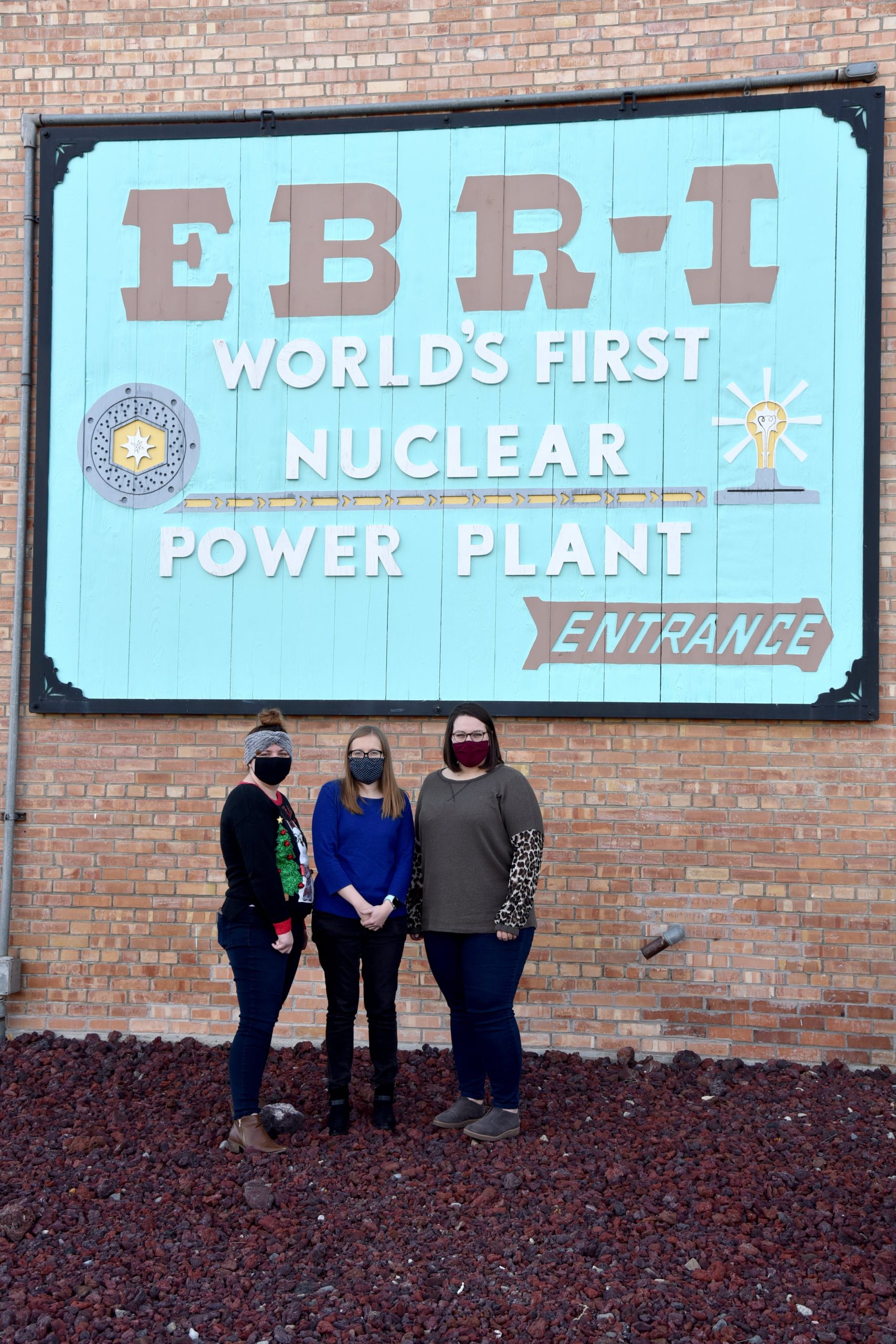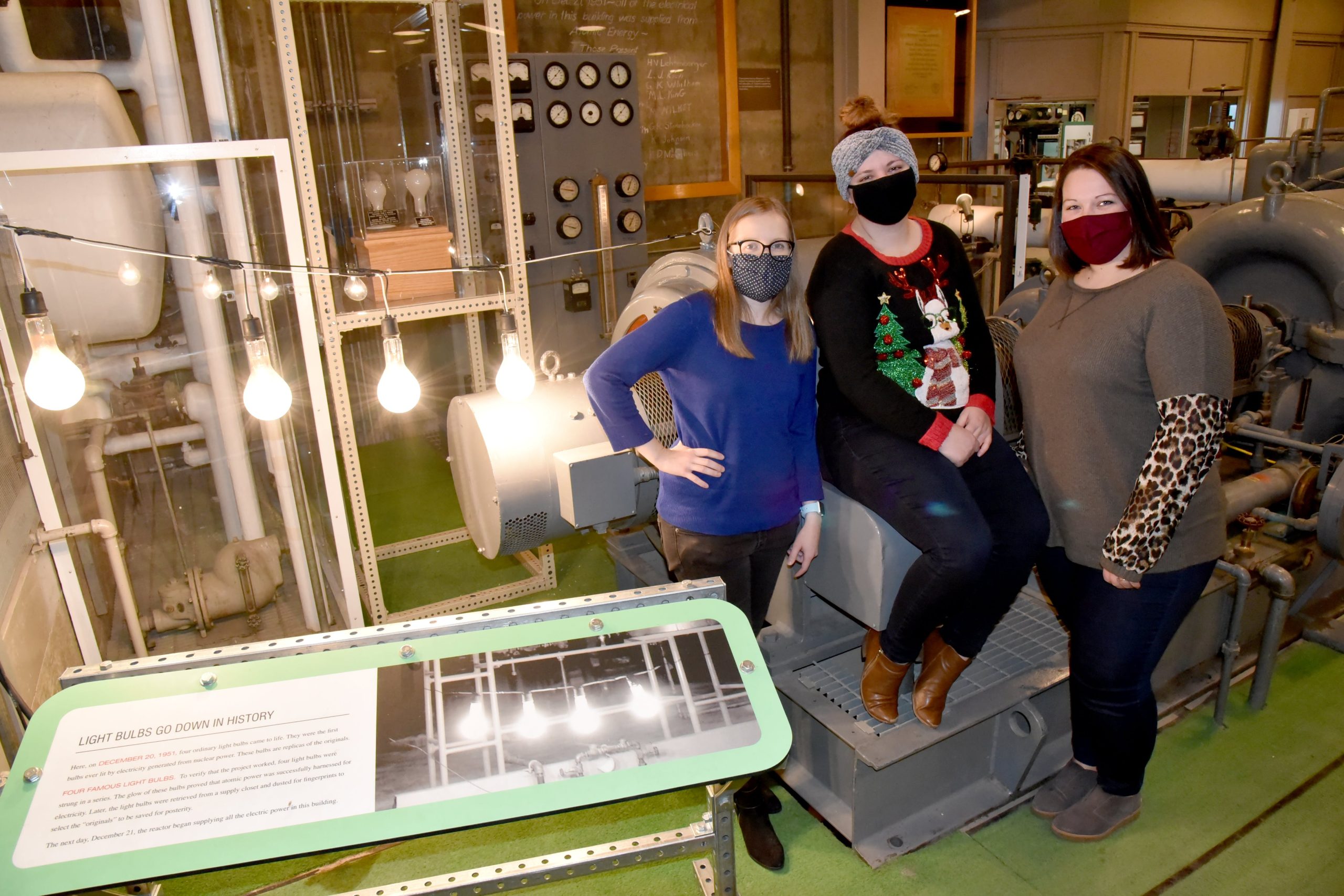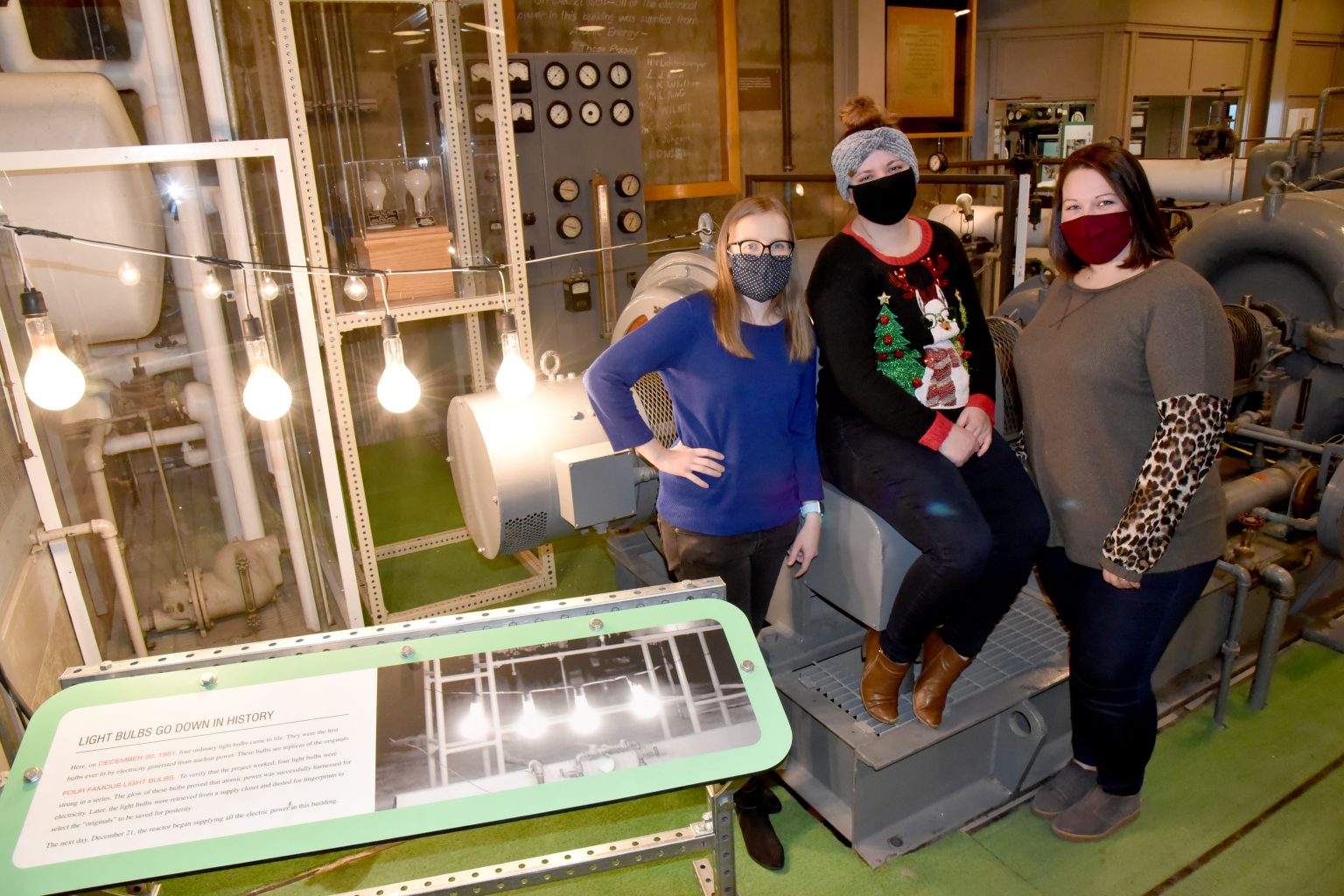When you spend your summer interning as a tour guide at Experimental Breeder Reactor-I, also known as EBR-I and one of America’s most unique museums, you’ll get asked some interesting questions.

“Is it safe to be in here?”
“I saw a lot of roadkill on the highway driving here; did the radiation kill them?”
“Did it ever melt down?”
For current INL employees Michelle Goff, Caitlin McNamara and Alana Haack, questions like that were just part of what made their time as EBR-I Atomic Museum tour guides so interesting and rewarding.
“To foster that connection with the public, even people who lived in Idaho Falls but didn’t know anything about it, was great,” said Haack, a Bonneville High School graduate who is now an INL Archives intern while she works toward her master’s. “EBR-I is a great way to foster that connection. It’s a good coming together of what we do at INL, what we’ve done at INL and what we’re going to do in the future at INL.”
EBR-I first produced electricity 70 years ago this December. It’s well off the beaten path and unknown to many, including plenty who grew up in eastern Idaho. But you can’t tell the history of nuclear power without mentioning this small, nondescript building located off U.S. Highway 20-26 between Idaho Falls and Arco that Lyndon Johnson designated as a National Historic Landmark during a visit in 1966.
And INL interns have played a key role in telling that amazing story, and educating the public on the benefits of nuclear energy along the way.
Learning the ropes
For years, interns from INL’s Communications and Outreach Directorate have played key roles introducing EBR-I, and the lab, to anyone who stops by for a visit. Prior to the COVID-19 pandemic, the museum hosted thousands of visitors each year (it’s been closed to the public for the past two years, but virtual tours are offered each month and by request by emailing [email protected]).
Like most interns before them, Goff, Haack and McNamara joined the team with little, if any, knowledge about EBR-I.
“I didn’t know a thing about it,” said McNamara, an Idaho Falls High School graduate who spent three summers working as a tour guide and is now a staff microbiologist at INL.
“My dad took me there when I was a kid,” said Goff, another IFHS grad who is now a communications specialist at INL. “The only thing I really remembered were the gloveboxes.”
Not all fun and games
McNamara was the first onboard, working as a tour guide in 2016 and 2017 before she was joined by Goff and Haack in 2018. They quickly became close friends.
“We call ourselves the EBR-I crew,” Haack said.

Their duties started by getting to know their new summer home. They underwent extensive training from INL’s full-time tour guides, read available literature, and picked up tricks here and there by watching colleagues give tours. They each said it took several weeks to learn the basics, and a month or so to get comfortable explaining the topic to visitors.
“I did a lot of cramming,” Goff said.
Their days started early, with a 6:45 a.m. bus ride or drive in an INL tour van. That got them to EBR-I in time to prep the museum for its 9 a.m. opening, which involved among other things checking for mice and snakes. They often wouldn’t make it home until well after 6 p.m.
The trio would give guided tours every hour and be on hand to answer questions about the facility, nuclear energy or anything else that came up. An average day would see more than 100 visitors, but they would often have more than 200.
“The thing that shocked me most was how many people stopped by,” Goff said. “We had people from all over the place, on their way to Craters (of the Moon) or Yellowstone who decided to come by.”
Some of those visitors were strong advocates of nuclear power. Others were firmly against it. But most visitors didn’t know much about nuclear or have strong feelings either way. The museum provided a great opportunity to educate people about nuclear energy’s often misunderstood safety and benefits.
“I think we had a lot of people who had heard horror stories about nuclear and weren’t really sure what to think about it,” Goff said. “The tours really gave us a chance to alleviate people’s fears about nuclear, explain radiation safety, time, distance, shielding, and provide them accurate information.”
McNamara agreed. She liked that she could move from the history of EBR-I to the work INL is doing now to change the world’s energy future.
“You’d give them a tour and at the end they’d tell you, ‘I didn’t know nuclear was so safe, or so cool,’” she said. “It was fun to help people understand how safe and beneficial nuclear can be.”
EBR-I facts
- On Dec. 20, 1951, EBR-I became the first power plant to produce a useable amount of electricity using atomic energy.
- EBR-I was the first reactor built in Idaho at the National Reactor Testing Station (forerunner to today’s INL).
- In 1953, testing at EBR-I confirmed that a reactor could create (or breed) more fuel than it consumes. At the end of the process, for every 1 atom of fuel that the reactor consumed, it was producing 1.27 atoms of new fuel.
- This pioneering reactor operated for 12 years before being shut down for the last time in December 1963.
- President Lyndon Johnson dedicated EBR-I as a National Historic Landmark in 1966.
- EBR-I is one of only 10 National Registered Historic Landmarks in Idaho.
According the INL.gov website, “it’s the only place in America you can see four nuclear reactors — including two aircraft nuclear propulsion prototypes, a reactor control room, remote handling devices for radioactive materials, radiation detection equipment, and much more.”
Virtually visit the EBR-I Atomic Museum
The museum, located 50 miles west of Idaho Falls on U.S. Highway 20-26, continues to be closed to the public due to the COVID-19 pandemic. When the situation improves, the museum will open from 9 a.m. to 5 p.m. seven days a week from Memorial Day through Labor Day.
Visitors can sign up for an online guided tour by emailing [email protected]. Download the TravelStorys app from your favorite app store and visit the museum from your home or as you drive across U.S. Highway 20. Visit inl.gov/ebr for more information.







